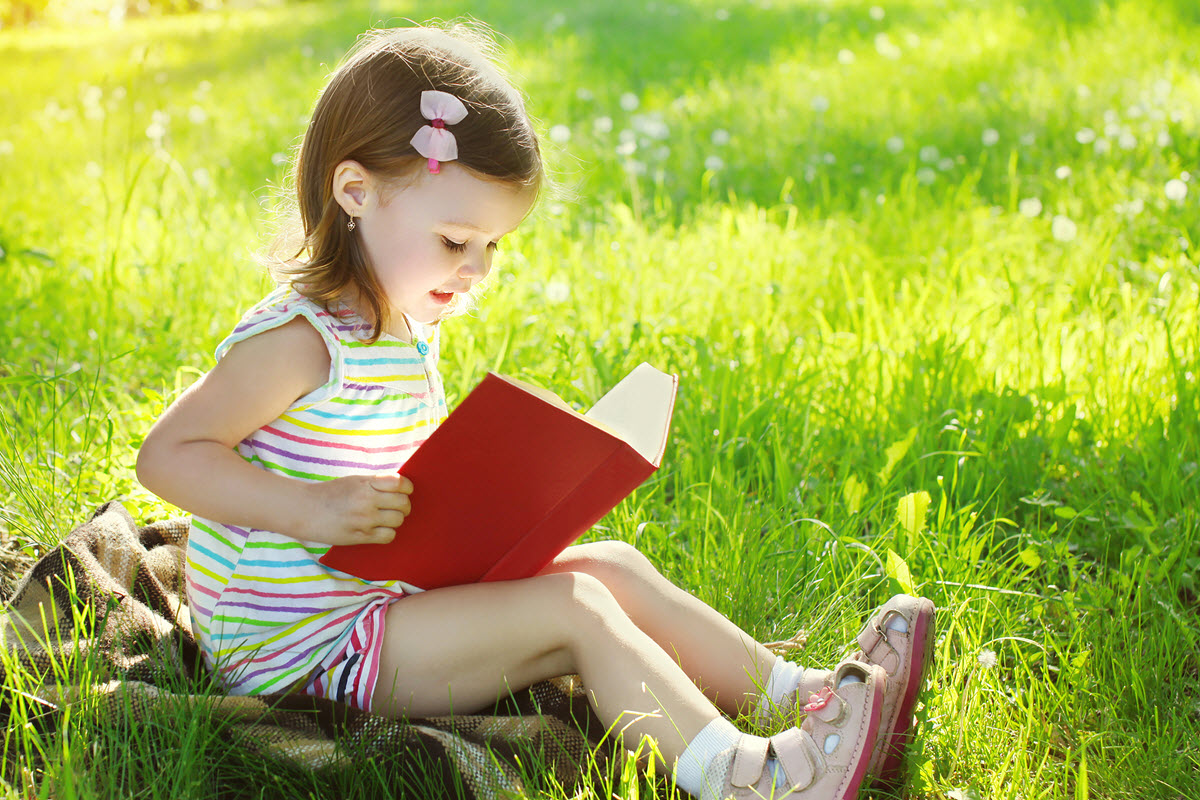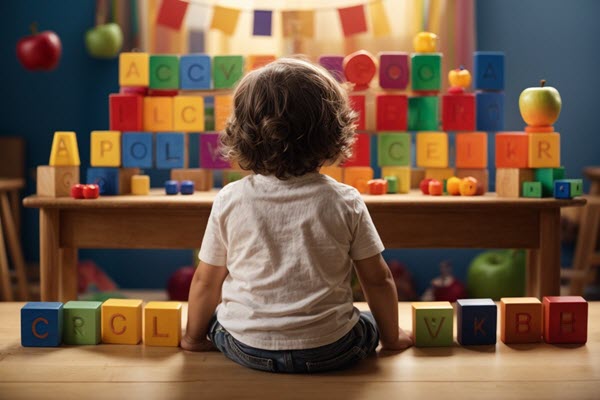Phonemic Awareness vs Letter-Sound Correspondence: Unlocking The Mysteries of Early Literacy
Embarking on the literacy journey is akin to unlocking a treasure chest for your little one, filled with the jewels of knowledge, expression, and imagination.
However, as you stand at the cusp of this exciting adventure, terms like Phonemic Awareness (PA) and Letter-Sound Correspondence (LSC) might appear as cryptic codes rather than keys to a treasure.
Here lies a common dilemma many parents face: the initial path to literacy can often feel shrouded in educational jargon, leaving you feeling like you need a decoder ring to make sense of it all.

But what if understanding these terms could actually be your golden key to enriching your child’s early reading journey?
Phonemic Awareness, the ability to hear and manipulate the sounds in spoken words, paired with Letter-Sound Correspondence, the understanding of the relationship between written letters and spoken sounds, are the compass and map leading to the treasure that is literacy.
By unravelling the mysteries of PA and LSC, not only do you dismantle the barriers between you and a thriving literacy adventure for your child, but you also step onto a path laden with hope and clarity.
This post aims to demystify these fundamental literacy concepts, offering you tangible insights and practical advice on nurturing these skills in your child, and paving a smooth road to literacy.
Through this guided exploration, you’re not just unlocking the alphabet for your child, but a whole world of words awaiting their curious eyes.
Unveiling Phonemic Awareness
Phonemic Awareness (PA) is the golden thread in the tapestry of reading.
It’s about the ears, not the eyes, about sounds, not letters.
Essentially, it’s the ability to hear, identify, and play with individual sounds or phonemes in spoken words.
Imagine it as the music conductor of language, orchestrating the rhythm, and melody in words. It is where your child begins to understand that words are made up of different sounds which can be manipulated and changed to create new or similar words. The magic lies in the auditory, in the ability to pick out, recognize, and meddle with sounds.
The cornerstone of early literacy, Phonemic Awareness paves the way for children to understand the alphabetic principle, which is the awareness that spoken words are decomposable into sound units which are represented by print. This understanding is vital for the development of reading and spelling skills.
It’s like giving your child a box of crayons with the confidence that they can color not just within the lines, but create new pictures altogether.
Let’s stroll through a day in the life of five-year-old Bella. As she plays with her toy blocks, she starts rhyming words, “cat, bat, sat, mat…” effortlessly moving from one sound to the next.
Later, while reading with her mom, Bella encounters the word “dog” and immediately starts coming up with rhymes – “log, hog, fog.” She’s not just passively absorbing; she’s interacting with the sounds, playing with them, and in the process, strengthening her Phonemic Awareness.
This playful interaction with sounds is the foundation of her literacy journey, where reading becomes not a task, but a playground.
Now, if you’re leaning towards amplifying this significant skill in your child, exploring some of the best learn to read programs could be your next best step. These programs often have structured, engaging activities that hone Phonemic Awareness and other crucial reading skills, providing a vibrant, supportive environment for your child to flourish in literacy.
Your child’s ability to play with sounds today is building their pathway to effortlessly decode and spell words tomorrow. So, as you encourage their playful interaction with sounds, you’re not just nurturing a budding reader but igniting a lifelong love for literacy.
Letter-Sound Correspondence: The Next Leap
As we venture further into the realm of early literacy, we stumble upon another gem – Letter-Sound Correspondence (LSC).
This is where the visual meets the auditory, where letters on a page transform into vibrant sounds in a child’s mind.
Letter-Sound Correspondence is the understanding that each letter of the alphabet corresponds to a specific phoneme, or sound.
It’s like giving a name to a face, only in this case, it’s giving a sound to a letter. This simple yet profound understanding is the bridge that takes a child from merely recognizing letters to reading words.
The magnitude of Letter-Sound Correspondence in a child’s literacy journey is immense. It is the scaffolding upon which the edifice of fluent reading and spelling is built.
When a child grasps that letters represent sounds, and a string of letters make up words, the words on a page come to life, dancing to the rhythm of spoken language. This understanding not only facilitates fluent reading but also lays a robust foundation for spelling, helping your child to encode the sounds into letters to spell words.
For parents yearning to nurture this crucial skill in their young learners, delving into the best ways to teach letter recognition can offer a plethora of insights. Recognizing letters is the stepping stone to understanding Letter-Sound Correspondence, and having a well-rounded grasp of both is akin to handing your child the keys to a grand library, waiting to be explored.
As you guide your child through recognizing letters and understanding the sounds they represent, you’re opening doors to a world where reading is not just a skill, but a joyful adventure.
The Synergy Between Phonemic Awareness and Letter-Sound Correspondence
Stepping into the realm of literacy is much like orchestrating a harmonious melody; each note holds its unique essence, yet it’s the symphony of notes together that creates magic.
In the literacy landscape, Phonemic Awareness (PA) and Letter-Sound Correspondence (LSC) are akin to these individual notes, each vital, yet when harmonized, they transcend to create a melody of understanding and literacy prowess in a child’s mind.
Phonemic Awareness, with its focus on auditory skills, lays a fertile ground where the seeds of Letter-Sound Correspondence can take root and flourish.
When a child can distinguish the sounds in spoken words, the leap to connecting those sounds to written letters becomes a natural progression. It’s like recognizing the tune before reading the musical notes.
The understanding that the sound /m/ is represented by the letter ‘m’, or the sound /b/ by the letter ‘b’, is a testament to the synergy between hearing sounds and recognizing their visual counterparts.
Conversely, as a child delves into the world of Letter-Sound Correspondence, their Phonemic Awareness is concurrently nurtured and refined.
As they begin to see letters as symbols of sounds, their auditory skills are sharpened, and the dance between hearing and seeing the sounds becomes more fluid and intuitive.
The beauty of LSC is that it provides a tangible, visual component to the abstract auditory skill of Phonemic Awareness, making the abstract concrete, and the unknown known.
The complementary nature of PA and LSC is the cornerstone that elevates early literacy. They’re like two sides of the same coin, each enriching and reinforcing the other. This duo paves the path for a child to morph from a novice into a proficient reader and speller, making the journey of literacy not a steep uphill climb, but a joyful exploration.
Together, Phonemic Awareness and Letter-Sound Correspondence are more than just educational terminologies; they are the twin pillars that uphold the vibrant world of literacy.
Their interplay is what transforms the daunting task of learning to read and spell into a captivating adventure, full of discovery and delight, propelling young learners into a realm where words come alive, stories become real, and the joy of reading becomes a lifelong companion.
Why are Long and Short Vowels Important?
As we traverse this path of early literacy, equipping ourselves with practical strategies is akin to having a trusty compass in hand.
The landscape of Phonemic Awareness (PA) and Letter-Sound Correspondence (LSC) is rich and ripe for exploration, and with the right set of tools and a sprinkle of patience, we can guide our young learners through this exciting terrain with ease and joy.
Engaging Activities and Resources
Delving into the world of sounds and letters can be as fun as a day at the amusement park.
Here are some engaging activities and resources to foster PA and LSC:
- Rhyming Games: Transform learning into playtime by engaging your child in rhyming games. Create a rhyming basket filled with objects, and have fun coming up with rhyming words together.
- Alphabet Books Focusing on Sounds: Select alphabet books that emphasize the sound each letter makes, creating a visual and auditory connection.
- Segmenting Spoken Words and Writing Them: Practice segmenting words into sounds, and encourage your child to write them out. It’s like solving a fun puzzle, piece by piece.
- Interactive Electronic Games: Utilize educational apps or online games that reinforce letter-sound relationships in an engaging, interactive manner.
The Role of Patience and Encouragement
Every child’s literacy journey is unique and unfolds at its own pace.
Your patience and encouragement are the gentle breezes that propel their sails forward. Celebrate their efforts, no matter how small, and provide a supportive, joy-filled environment where making mistakes is part of the learning adventure.
Laying a Solid Foundation
Teaching ABCs to preschoolers is akin to laying the first bricks to a magnificent castle of literacy.
It’s the stepping stone from where the journey of recognizing letters and understanding the sounds they represent begins. This foundational step is imbued with potential, leading to a well-rounded grasp of PA and LSC, setting the stage for a fulfilling, enriching literacy journey.
As we unravel these practical tips together, the abstract concepts of Phonemic Awareness and Letter-Sound Correspondence start morphing into a tangible, enjoyable experience.
With a blend of structured activities, playful learning, and unwavering support, we’re not just teaching our children to read and spell; we’re igniting a flame of curiosity and love for literacy that will illuminate their paths for years to come.
Exploring Quality Resources
In the vast ocean of literacy, resources are your trusty vessels, ready to sail you and your young learner towards the horizons of knowledge and understanding.
Having the right set of resources is pivotal in nurturing Phonemic Awareness (PA) and Letter-Sound Correspondence (LSC) in a child. It’s about finding those gems that not only educate but captivate the young minds, turning learning into a thrilling adventure.
Recommended Resources
Embarking on this expedition, a well-charted map is essential. Here are some recommendations that stand as lighthouses amid the stormy seas of overwhelming information:
-
Apps: Look for interactive apps that bring the sounds and letters to life. Apps like Starfall and ABCmouse offer an array of activities that foster both PA and LSC in a playful, engaging manner.
-
Books: Books that focus on phonics, such as “Alphabatics” by Suse MacDonald or “Chicka Chicka Boom Boom” by Bill Martin Jr., are great additions to your child’s library. They not only introduce letters and sounds in a fun way but also ignite a love for reading.
-
Websites: Websites like PBS Kids and Starfall provide a plethora of games and interactive activities that blend fun with learning, making the exploration of sounds and letters an enjoyable quest.
-
Children Learning Reading Program: This program is a treasure trove of structured lessons and activities designed to take a child from understanding sounds to reading words. It’s a roadmap, carefully curated to ensure a smooth, enjoyable literacy journey.
Choosing Engaging and Beneficial Resources
When it comes to selecting resources, the key is to find those that resonate with your child’s interests, keeping them engaged while also nurturing their literacy skills. It’s about creating a learning environment where curiosity is the captain steering the ship of exploration.
Opt for resources that are interactive, visually appealing, and audibly engaging, turning the process of learning PA and LSC into a delightful game rather than a daunting task.
Equipped with the right resources, you’re not just preparing your child for the voyage of early literacy, but you’re ensuring that this voyage is filled with discoveries, joy, and a lifelong love for learning.
Through these quality resources, you’re providing a safe, enjoyable harbor from where your child can confidently set sail into the enchanting seas of literacy.
Your Role in Your Child’s Literacy Adventure
The journey of literacy is akin to a beautifully unfolding story, with its twists, turns, and triumphant moments.
As the guiding star in your child’s literacy adventure, your role is monumental, akin to that of a cherished companion, offering support, love, and a sprinkle of magic along the way.
Encouraging a Love for Reading and Exploration
Fostering a love for reading and exploration is like opening the doors to an enchanted garden where words bloom and ideas flutter like butterflies.
Encourage curiosity, for it’s the compass that leads to the treasures hidden in the pages of books. Reading together, exploring the sounds of letters, and diving into the rhythm of words should be joyous experiences, filled with laughter, questions, and discoveries.
Your enthusiasm is infectious; let your eyes light up with wonder as you unravel the magic of words alongside your child. Create a cozy reading nook, a little haven where stories come to life and imaginations soar.
Your shared excitement and wonder will fuel your child’s desire to explore the world of literacy further.
Celebrating Small Victories
Every step forward, no matter how small, is a victory on the path of literacy.
The moment your child recognizes a new letter, creates a rhyme, or reads a new word, celebrate with heartfelt joy. These small victories are the stepping stones leading to a mountain of confidence and a valley of skills necessary for their literacy journey.
Your applause, words of encouragement, and shared joy in these accomplishments are the wind beneath their wings, propelling them forward with a heart full of hope and a mind brimming with self-assurance.
Your unwavering support, the joy of shared discoveries, and the celebration of tiny milestones make the literacy adventure a cherished journey. It’s a shared quest filled with love, learning, and the beautiful unfolding of endless possibilities.
Through every challenge and celebration, the bond of learning grows stronger, weaving beautiful memories and a lifelong love for reading and exploration.
Conclusion
As we draw the curtains on this enlightening exploration, the echoes of Phonemic Awareness and Letter-Sound Correspondence reverberate, forming the harmonious melody that is early literacy.
These aren’t mere educational terms, but the golden keys to unlocking a world of words, imagination, and endless curiosity for our young learners.
Through the lens of Phonemic Awareness, they embark on a journey of sound, an exploration that naturally paves the way to the visual realm of Letter-Sound Correspondence, where letters spring to life with the magic of sound.
We’ve navigated through the practical strategies to nurture these foundational skills, from engaging in rhyming games to diving into interactive electronic adventures. The emphasis on patience, encouragement, and the celebration of small victories emerged as the gentle rays of sunshine, illuminating the path on this literacy adventure.
The voyage into the realm of reading is a shared quest, filled with the joy of discovery, the excitement of understanding, and the treasure of shared experiences. The resources and tips shared are the compass and map to navigate through the exciting terrains of early literacy.
With a heart full of hope, eyes twinkling with excitement, and a treasure trove of resources at your fingertips, the path to fostering a profound love for reading and a strong foundation in literacy for your child is brightly illuminated.
Embrace this journey with open arms, for it’s not just about teaching your child to read and spell, but about igniting a flame of curiosity and a lifelong love for learning.
Together, let’s step into this enchanting world, where every letter, every sound, and every word is a doorway to a realm brimming with possibilities, joy, and endless adventures.

Natalie is a full-time blogger and former elementary school teacher who specializes in helping parents teach their kids to read. With a qualification in Early Childhood Education, over 7 years of experience in education, and a passion for literacy, Natalie provides practical tips, activities, and resources for parents looking to support their child’s learning-to-read journey. She is the proud mom of two young readers and loves sharing her knowledge and experience with other parents. Natalie enjoys spending time with her family, reading, and exploring the great outdoors when she’s not blogging.


